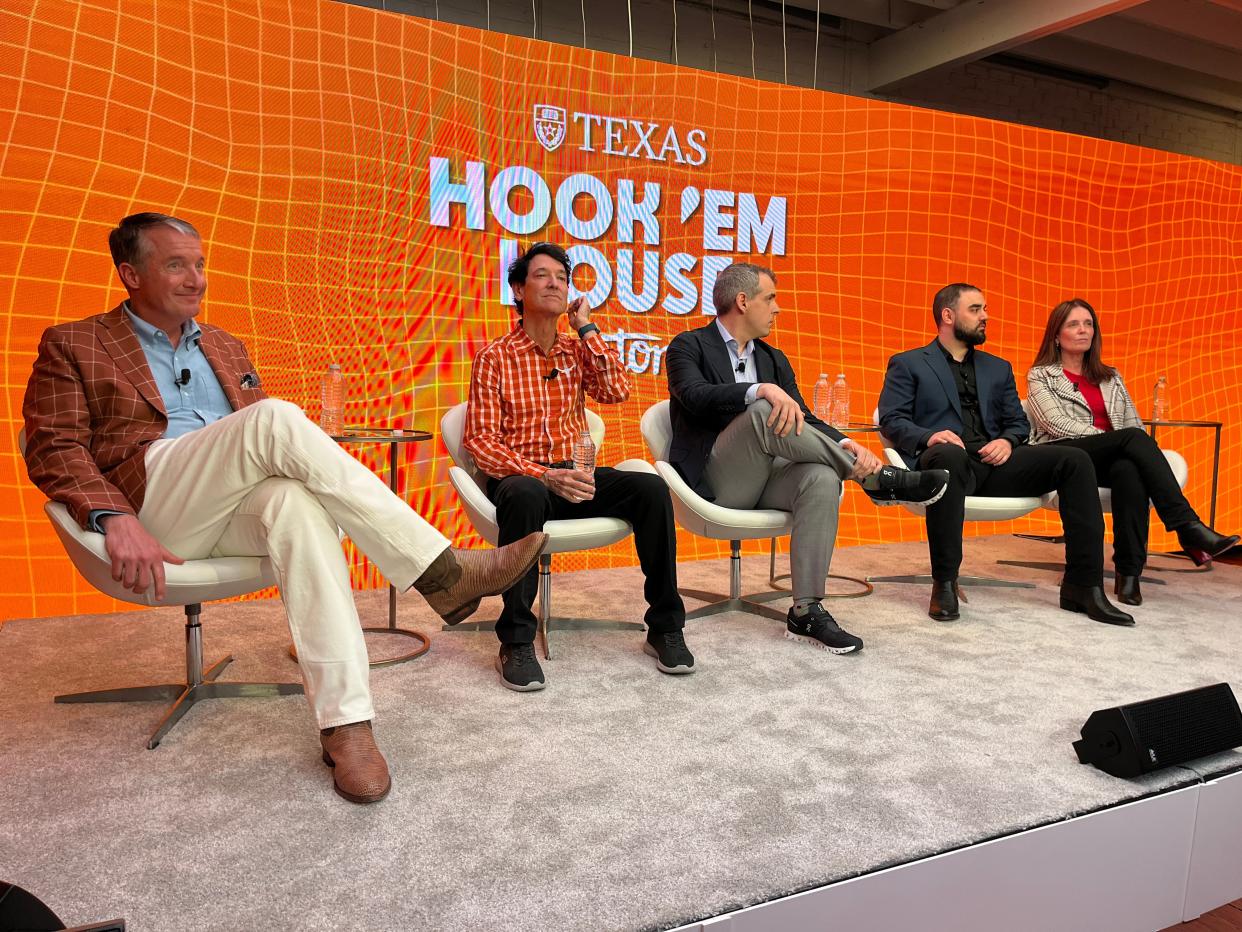Is Austin the next boomtown? Investor Jim Breyer, UT leaders talk AI and medicine

- Oops!Something went wrong.Please try again later.
- Oops!Something went wrong.Please try again later.
Just weeks after the death of his wife Angela Chao, tech investor Jim Breyer joined University of Texas President Jay Hartzell, UT Dell Medical School Dean Claudia Lucchinetti, fellow tech investor Thomas Cahill, and medical artificial intelligence entrepreneur Andre Esteva, for a panel on why Austin is poised to lead a surge in medical startups fueled by artificial intelligence and biotech discoveries.
What sets Austin apart from other tech or medical cities?
Breyer talked about why he and Chao moved to Austin after having dinner with Michael and Susan Dell in 2019. The Dells encouraged them to move to Austin because they were spending so much time in Silicon Valley and New York for work. Austin is in the middle.
"There is some magic here," Breyer said.
What he has loved about Austin, he said, is the chance to have a 10-person dinner and have people around the table coming from different disciplines all talking to one another. He called Austin a "magical community" where musicians and filmmakers can meet with people in technology and startups. "There's an opportunity to build a seamless community," he said.
What we also learned:
There's an advantage of having a young medical school. "We aren't an existing siloed academic medical center," Lucchinetti said. The school is working on building collaborations with the engineering school, the Oden Institute of Computational Science and Engineering, the School of Pharmacy and Nursing, the School of Social Work. "We don't have to retrofit," she said. "We have an opportunity to build a spirit of collaboration."
Medical schools have to change as science changes: Medical school is no longer just about learning facts about the body and diseases. It's learning how to work with humans as well as technology, artificial intelligence and data that are changing medicine, Lucchinetti said. "The team is now human and machine," she said. And "data is the rocket fuel" of this change. "The opportunities are endless," she said of AI, data and medicine. She also noted that "generative AI has transformed everything. It feels like we're trying to keep up, but it feels like we are far behind. Physicians have to become entrepreneurs."
UT can create talent, but that talent needs freedom: Cahill talked about the importance of flexibility in tenure to allow people in academia to leave to start ventures, but then return to academia to teach what they learned.
Austin is well-positioned for the future: It has a tech hub, a top-tier research university and venture capital. "The seeds are there," said Esteva. It can create innovative businesses. "The challenge is making sure those companies stay and flourish locally," he said. That might mean incentives and building more venture capital.
Don't forget the UT school spirit. The alumni network can be used to help build connections with current alums as well as with students, Breyer said. And having a top 5 football team helps. Hartzell envisions doing more way finding to help students connect with business and research opportunities.
What Austin does need: A better airport, said Cahill. It needs more flights to more places to attract more business. For Breyer, it's more affordable housing to bring people just starting their careers in research and academia to Austin. Less traffic would also be nice, but it's still not Southern California.
The Erwin Center is coming down slower than Hartzell would like. "Asbestos turns out to be a thing," he said. The site of the former basketball center will be the home of two hospitals by 2030: an MD Anderson and a UT specialty hospital. Those will fuel more research, more innovation and more collaboration between departments at the University.
This article originally appeared on Austin American-Statesman: SXSW 2024: University of Texas, Jim Breyer talk medical tech in Austin

